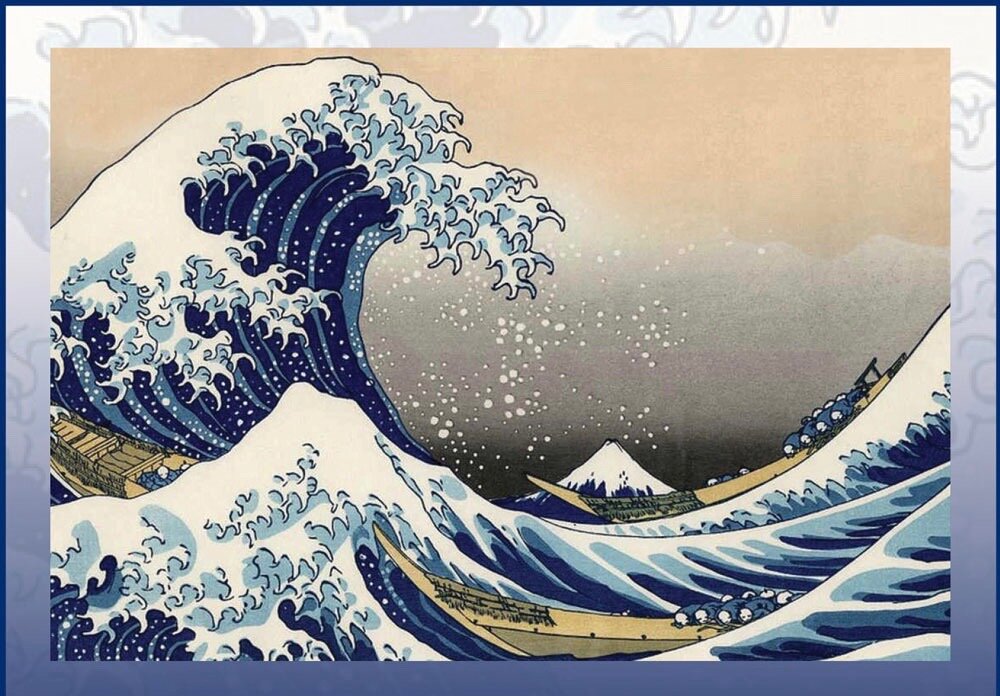As we stand in the middle of The Fourth Foundation of Mindfulness, with its welter of five hindrances, the five aggregates, the six sense doors, the 7 spiritual factors, and the 4 Noble Truths, let us reflect on how we got here to get a better sense perhaps of what is happening in this Fourth Foundation of Mindfulness.
We began several months ago with The Four Noble Truths - there is suffering, there are causes for suffering, there is an end to suffering, and the Fourth Noble Truth, the path to the end to suffering - the Noble Eight Fold Path. So we started bravely down the Noble Eight Fold Path encountering wise View, wise Intention, wise Speech, wise Action, wise Livelihood, wise Effort, and here at the seventh path factor, wise Mindfulness. Wise Concentration is the 8th path factor. In wise Mindfulness, the Buddha taught how to practice mindfulness through the Four Foundations of Mindfulness - mindfulness of the body, feeling tone, mental events and finally, this, the Fourth Foundation of Mindfulness and its veritable grab-bag of lists.
But the Fourth Foundation of Mindfulness takes us on a little journey within the larger journey. As soon as we begin meditating, the hindrances arise. We may not recognize them or even know about them for some time but eventually we begin to see the wanting or craving behind jumping off the cushion to get a cup of coffee, a snack, or indulging a “very important thought.” Or we begin to see how we lose our concentration because we are drowsy or our knees or backs hurt. Or we get discouraged because we’re convinced we don’t know how to do it or the instructions are flawed or the teacher talks too much.
So our first task is to learn to recognize and work with the hindrances.
The next two categories - mindfulness of the aggregates and mindfulness of the sense spheres - are different models for looking at our own experience. And the contemplation of experience through these two lenses helps us begin to loosen our grip on identifying with our experience. To take the model more familiar to us, mindfulness of the sense spheres, we can begin to contemplate our experience of sight, hearing, sensing, cognizing without all the add-ons of our thinking, conceiving, and appropriating minds. In the seeing is just the seen. In the hearing is just the heard. In the sensing is just the sensed. In the cognizing is just the cognized. The “I” is extra. Not inherent in the experience. The I, me, and my-making is how we attempt to control our experience. With mindfulness of the senses, we begin let go of inserting our add-ons and to see more clearly.
The seven factors of awakening - mindfulness, investigation, energy, joy, tranquillity, concentration, and equanimity - are qualities we have all experienced. They begin to arise more obviously as we see more clearly. Here we are asked to recognize when they have arisen and what supporting factors helped them arise so that we can enhance their arising and not support conditions that subvert their arising. Important to remember that we can’t make them arise, but we can create the conditions for their arising. Our habits of striving and achieving are useless here - except perhaps as markers of identification.
So the arc of the Fourth Foundation of Mindfulness is sort of a practice map - noting and working with the hindrances, practicing with the aggregates and the sense spheres to see more clearly and weaken our identification with experience, recognizing and supporting the awakening factors.
This is the beautiful arc of practice and to ground this arc, the Buddha reminds us why he and we are here in the first place. The Fourth Noble Truths. There is the truth of suffering - physical, mental, psychological, individual, family, community, global - there is suffering. There are causes for suffering - internal, external, and both internal and external. And because there are causes, there can be an end to suffering. The Buddha offers us this pathway out of suffering - The Noble Eight Fold Path.
It was out of his immense compassion that the Buddha offered these teachings. He went in search of the truth out of his own suffering, his own shock at the suffering of sickness, aging, and death. When he awakened and achieved his own release from suffering, he at first despaired that anyone would understand these teachings. But, as he began to teach his old colleagues, he saw that the teachings were helping them gain freedom as well. And his confidence grew that just as he had found freedom, so could others, his monks and nuns. And so could we.
So can we.
So this Fourth Foundation of Mindfulness is a sort of road map within a road map. A road map of specifics about the hindrances, the awakening factors, and two models for seeing experience more clearly. And this map is inside the road map of the Noble Eight Fold Path which in turn is the Fourth Noble Truth.
The Refrain: “In this way, in regard to dharmas {the teachings and the way things are}, [the meditator] abides contemplating dharmas internally…externally…internally and externally. She abides contemplating the nature arising… of passing away… of both arising and passing in dharmas. Mindfulness that 'There are dharmas’ is established in him to the extent necessary for bare knowledge and continuous mindfulness. And she abides independent, not clinging to anything in the world.”
First you start, and then you continue.

